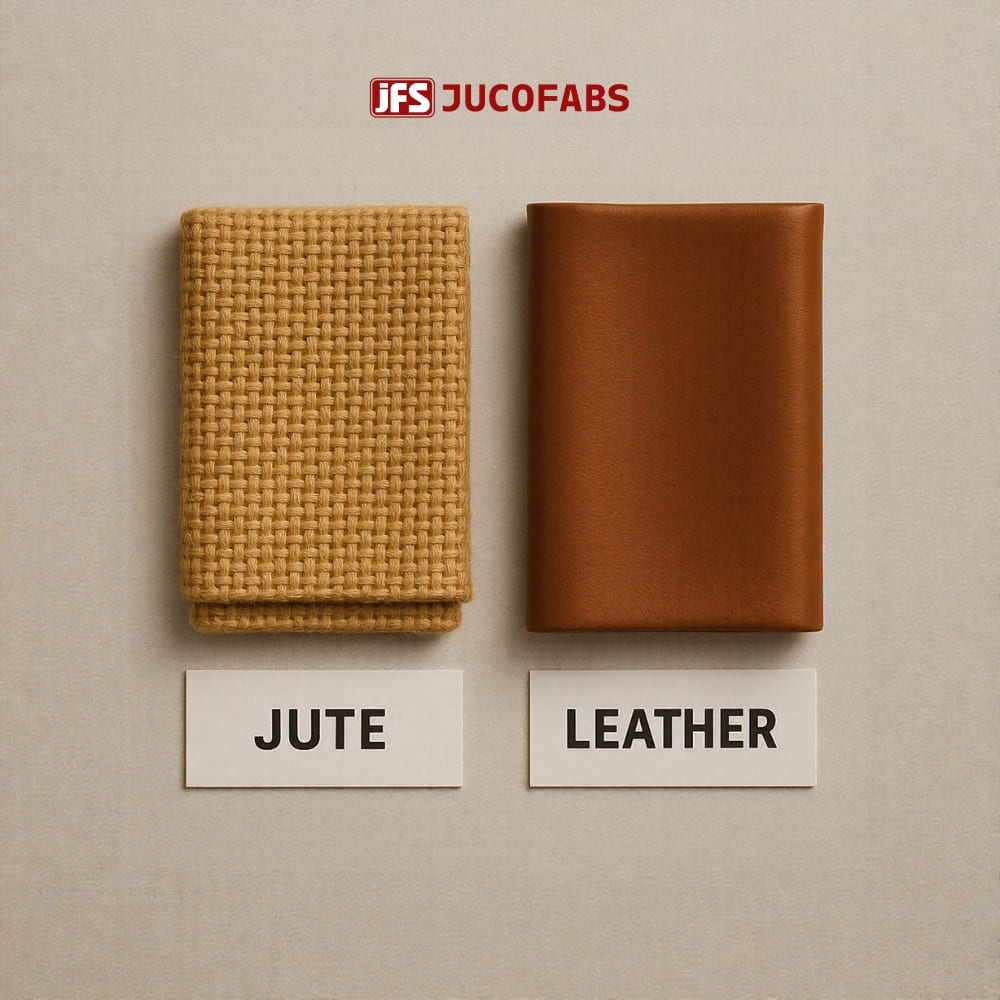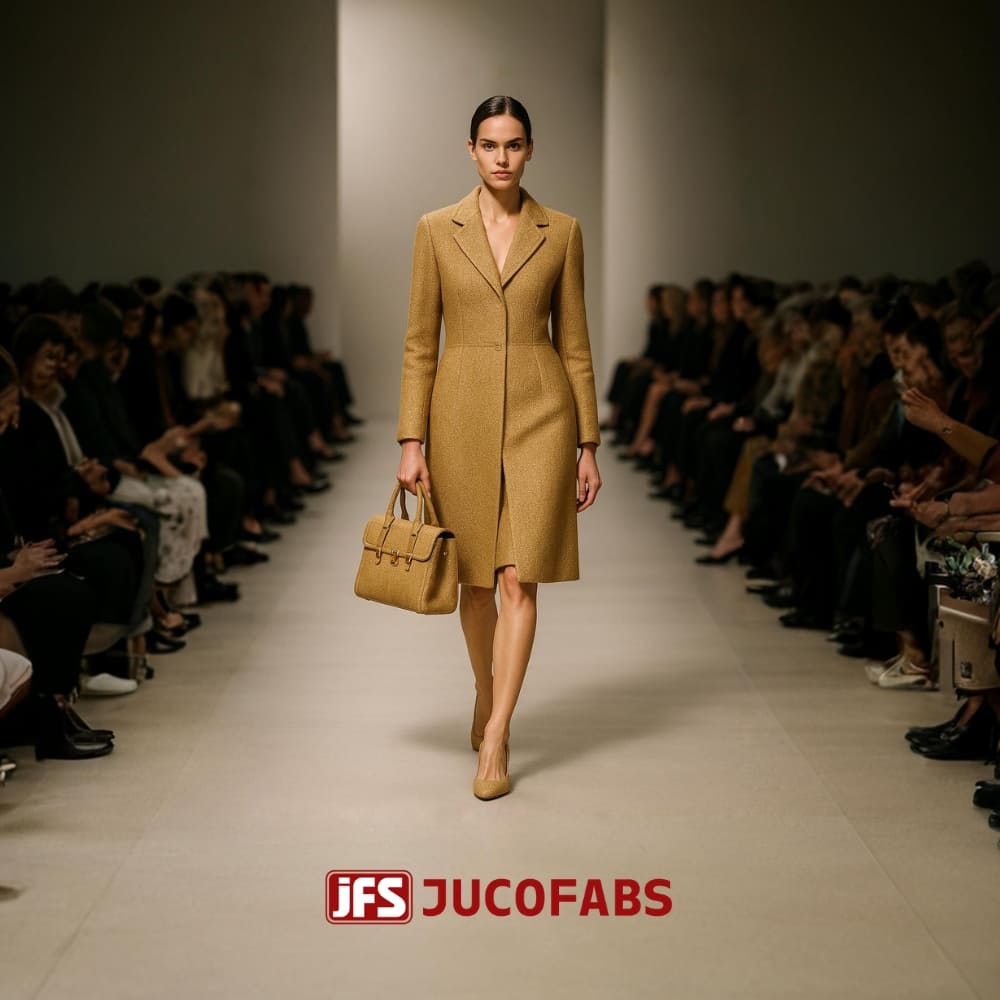Luxury is undergoing a quiet but powerful transformation. No longer is it defined only by exclusivity or price tags. Today’s discerning consumer wants more—more sustainability, more purpose, and more planet-first thinking. That’s where eco-luxury comes in.
As fashion rethinks its future, traditional materials like leather are being scrutinized for their environmental toll. At the same time, natural alternatives are stepping into the spotlight. One unexpected contender? Jute—an earthy, biodegradable fiber long associated with rustic packaging and eco totes.
Now, with the rising popularity of eco luxury bags and the growing demand for sustainable fashion trends, the question is clear: Can jute hold its own in the high-end space once dominated by leather? Brands, designers, and shoppers alike are starting to believe it can.
Explore the full range of eco-luxury jute bags here
Jute has been around for centuries, often referred to as the “golden fiber” for its silky shine and golden hue. Historically used in sacks and ropes, this humble plant-based material is now being reimagined as a key player in the sustainable fashion movement.
Why the shift? For one, jute is incredibly sustainable. It grows quickly, needs very little water, and thrives without harmful pesticides. Unlike synthetic fibers or chemically treated leather, jute is completely biodegradable—breaking down naturally and leaving behind zero trace.
In fact, jute even improves the health of the soil it grows in. It’s one of the few crops that absorbs more CO₂ than it emits, making it a standout in the race to reduce the fashion industry's carbon footprint. Read more on jute’s climate impact.
It’s not just the environmental benefits that are turning heads. Jute has a unique aesthetic appeal: a natural texture, warm earth tones, and a handcrafted look that resonates deeply with today's conscious consumers. When refined and blended with other sustainable fibers, it becomes both functional and stylish—two qualities essential to sustainable luxury fashion.
To understand jute’s true potential in the luxury fashion space, we have to compare it to its most iconic counterpart: leather.
When it comes to durability, jute can’t quite match the toughness of leather on its own—but it’s catching up fast. With advancements in textile engineering, modern jute can be laminated, blended, or structured to stand up to daily use. Many eco-luxury bags now feature reinforced jute that rivals the functional lifespan of standard leather goods.
As for versatility, jute is carving its own lane. It may not replace leather in every application (yet), but it brings a natural, conscious aesthetic that resonates with a growing number of style leaders. In a world where values matter as much as visuals, jute offers a compelling alternative.


Jute may be rooted in tradition, but its design potential is anything but old-fashioned. Thanks to advancements in textile innovation, designers are transforming jute into fabrics that are soft, flexible, and surprisingly upscale.
Gone are the days when jute was only used in sacks or garden décor. Today, it’s showing up in eco-luxury handbags, structured clutches, minimalist wallets, and even woven heels. Designers are experimenting with jute blends, natural dyes, and artistic weaves to elevate its look and feel—while maintaining its sustainable integrity.
Some collections have even started using laminated jute or mixing it with organic cotton to add softness without compromising on its biodegradable nature. The result? Accessories that don’t just look elegant—they tell a story of conscious craftsmanship.
Luxury is a mindset—and perceptions are shifting fast. While leather has long been synonymous with wealth and status, today’s high-end consumers are redefining what luxury really means. For many, true luxury now includes sustainability, ethical sourcing, and a lower environmental footprint.
The key to making jute feel luxurious lies in how it's presented. Smart branding, storytelling, and minimalist design help elevate its image from “natural” to “premium.” Think clean lines, artisan finishes, and packaging that communicates both quality and care.
Celebrity endorsements and eco-influencer marketing have also played a big role. Social media is full of creators showcasing their eco-chic lifestyles, featuring brands that align with sustainable fashion trends. Jute accessories, especially those that look high-end while being ethically made, are catching on fast.
Brands that lead with purpose—like Jucofabs—are tapping into this momentum by telling the story behind the material: how it’s grown, who makes it, and how it helps reduce plastic and leather usage. That kind of transparency builds trust—and luxury. Learn more about green marketing.
The shift toward sustainable materials in luxury isn’t hypothetical—it’s happening now. Several forward-thinking brands are already weaving jute into their collections and making bold statements on environmental responsibility.
Jucofabs has been a pioneer in this space. Known for their commitment to eco-conscious design, they’ve created an entire line of premium jute bags tailored for upscale markets. Their attention to texture, structure, and minimalist branding bridges the gap between earthy and elite.
Elsewhere, high-end designers are experimenting with leather alternatives like Piñatex (from pineapple leaves), mushroom leather (mycelium), and yes—jute. Collaborative capsule collections that blend traditional techniques with modern design are starting to appear in sustainable fashion showcases globally.
These innovators aren’t just creating new looks—they’re building a movement. One that’s redefining eco-luxury not as a trend, but as the future of fashion. Discover global brands embracing sustainable fashion.
Despite jute’s many advantages, breaking into the luxury segment doesn’t come without challenges. One of the biggest hurdles is perception. For decades, jute has been associated with low-cost goods—shopping bags, sacks, and utility items. Convincing traditional luxury buyers that jute belongs in high fashion takes smart marketing, top-tier craftsmanship, and consistent quality.
Another challenge is scalability. While jute is plentiful and fast-growing, transforming it into refined, soft, and durable fabrics suitable for premium products requires more advanced processing than traditional applications. Sourcing high-quality jute and training artisans in precision techniques are essential steps that demand investment and education.
On the flip side, this presents an exciting opportunity: by offering limited edition or custom collections, luxury brands can highlight the artisanal nature of jute. These small-batch, story-driven pieces resonate strongly with consumers seeking exclusivity, ethics, and uniqueness in one package.
As sustainability becomes a non-negotiable in fashion, brands that adopt jute early can position themselves as leaders in the eco-luxury space. The demand is growing—and the window for differentiation is now.
So, can jute actually replace leather in high-end fashion? Not completely—but it doesn’t have to. What jute offers is a viable, sustainable alternative for consumers who care as much about the planet as they do about premium products.
Looking ahead, we’re likely to see continued growth in eco-luxury accessories that combine jute with other plant-based materials, pushing boundaries in design and texture. With researchers making breakthroughs in natural fiber enhancement, the next generation of jute textiles will be even more versatile and elegant.
What’s more, global fashion policies are beginning to support material innovation. Countries in Europe and Asia are incentivizing eco-friendly production, while major fashion councils are calling for transparency and circularity across the supply chain.
Jute may not be the sole disruptor—but it is certainly part of a broader movement. As the demand for leather alternatives continues to rise, jute stands ready, offering a blend of heritage, sustainability, and fresh appeal that modern luxury demands.
Luxury isn’t about waste anymore. It’s not about carbon footprints, animal skins, or disposable trends. True luxury in 2025 is defined by impact—positive impact.
Jute, once overlooked, is now a symbol of fashion’s future: beautiful, ethical, and conscious. It may not replace leather in every application, but it challenges us to rethink what high-end means—and who benefits from it.
Brands like Jucofabs are proving that jute can be more than functional—it can be fashionable, desirable, and transformative. As consumers increasingly seek products that align with their values, the rise of eco-luxury is not just a passing trend—it’s a paradigm shift.
In this new world of conscious fashion, jute isn’t competing with leather—it’s redefining the game.